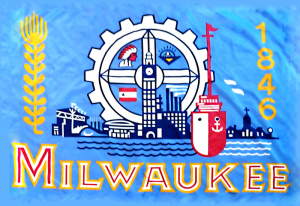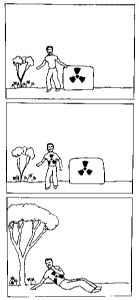I've never been a big video game / computer game guy. As a kid I played what I think is a fairly normal amount of Nintendo for the average American teenager of the late 1980s and early 1990s. The last video gaming system I owned was a Super Nintendo, to let you know how much I stay on top of console technology. In fact, with the exception of a $5 copy of Counter-Strike I put on my PC five years after the game ceased to be popular, I am essentially game-less.
OK, OK. Also the Call of Duty series. Lately I don't even have time for that, though.
Still waiting to get Black Ops. Despite this damning exception, hopefully the point holds: I've never been a Gamer. So I don't really get what compels people to be Gamers.
Not dabblers or dilettantes, mind you, but the obsessive "I play WoW 19 hours per day" kind. The games people play these days, especially the "role playing" kind, are a little too…intense for me.
My sense that this is not a world I have the time or inclination to enter was reinforced when I saw this story about how Chinese prisoners are being forced to "gold farm" en masse in World of Warcraft and other popular MMORPGs. For those of us not in the know, players can perform mindlessly repetitive tasks to amass in-game currency ('gold') that can be used to purchase items of value to one's character. And apparently players looking to save time are willing to pay money – real life money – for these in-game currencies. So Liu and his fellow prisoners play WoW until they amass 100 gold doubloons or whatever, and then some gamer kid pays $50 in real money for them via PayPal, credit card, etc. Man, I remember when good ol' prepaid credit cards were good enough for transnational money laundering.
Since this is not my subculture, this story shocked me.
I have a vague sense of how "into" these role playing games some people get, but it's surprising to learn that enough people people are willing to shell out money for goblin armor and wizard spells or whatever to sustain a multi-billion dollar black market. I mean, when Chinese prisons are forming work details to turn out vast amounts of a given item, it's safe to say that global demand is high.
I suppose the following is true of any hobby – we know how expensive hobbies get, right? – but it blows my mind that people get enough of a psychological benefit out of a video game to make a second life out of it (and don't get me started on Second Life).
The idea of getting far enough into virtual / alternate universes to start shelling out money to buy fake objects from Chinese prison sweatshops is…as I said earlier, a little intense. All these years I thought games were supposed to be, you know, fun. This just seems like work. Work mixed with escapism. In a way, the fact that someone managed to combine those two is pretty impressive.
I'll stick with Tecmo Bowl.











